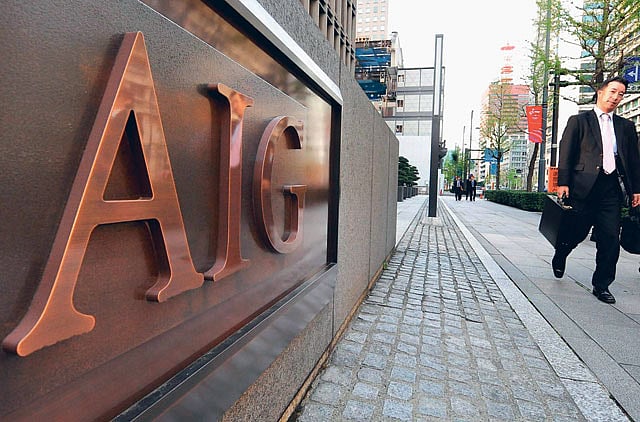American International Group Inc says it's poised to emerge as a "financially strong, independent company" once it repays the government. That claim might be more credible if AIG started showing a truer picture of its financial condition.
The choice belongs to AIG and, ultimately, the Treasury Department. By keeping its stake below 80 per cent (it's at 79.9 per cent), the government ensured that a financial-reporting method known as push-down accounting wouldn't be permitted under US accounting rules.
Had AIG chosen to implement push-down accounting, it would have had to undergo a complete re-assessment of all its assets and liabilities. And, with a few possible exceptions, the company would have been required to begin showing them on its balance sheet at their fair market values, which may have left AIG's books looking a lot worse.
The government wanted to avoid the possibility of this outcome so it structured the Treasury's ownership position to make sure that "push-down accounting is disallowed and not an issue," the panel said.
The Treasury's stake is now set to increase significantly, however. One consequence, judging by the numbers AIG cited last week in a press release, is that push-down accounting would become optional, though not required.
Under AIG's plan to repay the government, the Treasury would swap its current holdings, now valued at $49.1 billion, for a 92.1 per cent stake in AIG's common stock. Once the exchange is completed, the Treasury then would sell its shares on the open market.
Many investors will wonder, ‘what are the items on AIG's balance sheet actually worth?' The government might not want the public to know the answer.
‘Push-down' rules
When a transaction or series of deals results in a company becoming substantially owned by another entity, the new owner allocates its purchase price among the assets and liabilities it acquired, using their newly assigned fair values. Those values then are pushed down to the acquired company, which can cause either positive or negative adjustments to the items on its balance sheet.
The effects of push-down accounting probably would be sizeable. One example of an asset carried at cost, rather than fair value, is a $29 billion line on AIG's books which includes sales commissions and expenses related to acquiring and renewing insurance policies. These deferred costs aren't saleable and their fair value wouldn't be anywhere close to $29 billion.
An AIG spokesman, Mark Herr, declined to comment as did a Treasury spokesman, Mark Paustenbach. My guess is that neither wants to highlight that push-down accounting is back on the table. If more investors knew, they might demand additional transparency.
Sign up for the Daily Briefing
Get the latest news and updates straight to your inbox
Network Links
GN StoreDownload our app
© Al Nisr Publishing LLC 2025. All rights reserved.
